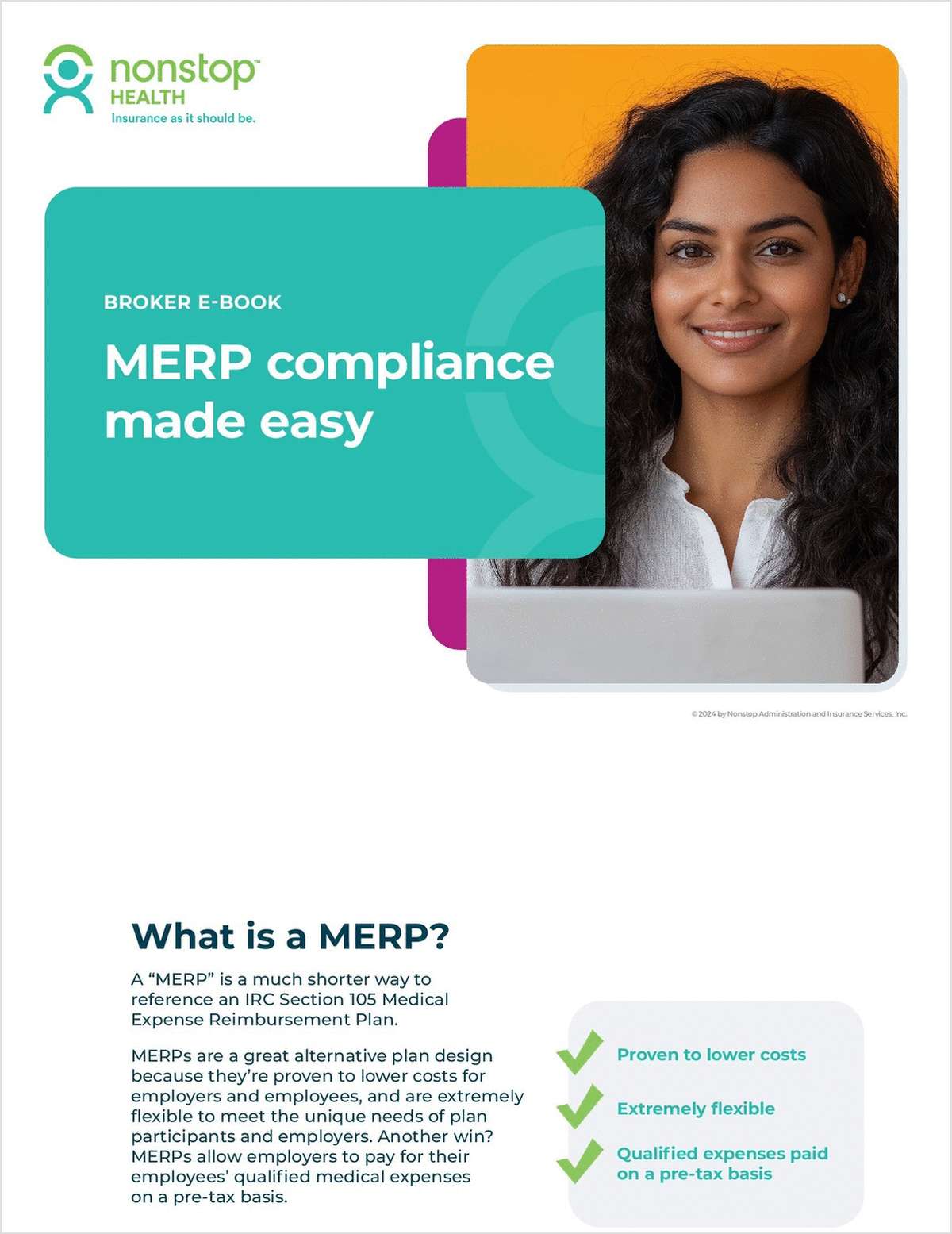Managers of President Donald Trump's Centers for Medicare & Medicaid Services are hoping that, if the program still exists next year, insurance agents and brokers will help solve a major problem: HealthCare.gov has a puny Small Business Health Options Program division.
The U.S. Department of Health and Human Services, the parent of CMS, set up HealthCare.gov under former President Barack Obama, to provide Affordable Care Act public exchange services in states that were unable or unwilling to do the job themselves.
HealthCare.gov now runs the SHOP division for 33 states. Officials at Obama's CMS always avoided answering questions about HealthCare.gov SHOP enrollment.
Trump's CMS officials have now revealed the 2017 SHOP enrollment number, in a new notice announcing a SHOP overhaul proposal.
HealthCare.gov started 2017 with just 7,600 employer clients in all of the 33 states it serves. Those 7,600 employers are covering just 39,000 people through their SHOP plans, or fewer than six people per plan, according to CMS figures.
Uncertainty about the future of the Affordable Care Act may have hurt 2017 SHOP sales. It's possible that the 2016 enrollment numbers were better than the 2017 numbers. Any defenders of the Obama administration's SHOP program will have trouble making that case, however, because Obama's CMS never released 2016 enrollment numbers. The new SHOP numbers appear to be the first CMS has ever released, aside from some very rough, incomplete estimates buried in paperwork burden review notices.
The low 2017 HealthCare.gov SHOP enrollment numbers show that CMS has to change the way the SHOP division works, CMS officials say.
In the HealthCare.gov states, "SHOP programs are now defunct and do not provide needed insurance coverage for small businesses," officials say.
CMS officials say they want to revive the HealthCare.gov SHOP division by giving up on efforts to have small employers enroll in coverage online. Officials hope to turn almost all responsibility for setting up SHOP plans, enrolling workers in the plans, and administering the plans over to insurers, agents and brokers.
The HealthCare.gov website would still determine whether a small employer was eligible for the Affordable Care Act Small Business Health Care Tax Credit subsidy, but private companies would do just about everything else.
Seema Verma, the CMS administrator, says in a statement that the goal of the proposal was to reduce burdens on small-business owners.
"This new direction will help employers find affordable health care coverage for their employees and make the SHOP exchange function more effectively," Verma says.
The proposed changes would have a direct effect only on the 33 states that use HealthCare.gov to run their SHOP divisions.
The jurisdictions with locally run SHOP exchange divisions have posted mixed SHOP enrollment results.
The District of Columbia and Vermont have high SHOP enrollment numbers because they require small groups to get new, fully insured health coverage through their locally run ACA exchange program SHOP divisions, even if those groups also use agents, brokers or benefits consultants. Some other states with state-based exchanges, including California and Connecticut, have also achieved respectable SHOP enrollment numbers.
Other states have had trouble with their SHOP divisions. Managers of Nevada's exchange reported in April 2015 that, earlier in the year, the state's SHOP exchange division was providing coverage for just seven people.
The new CMS SHOP enrollment numbers imply that jurisdictions with their own locally based ACA exchange programs serve 19,400 SHOP plan sponsors and about 191,000 SHOP plan enrollees.
Members of the Trump administration and Republicans in Congress are trying to repeal and replace the ACA. Successful efforts to change the ACA could kill the ACA exchange system. For now, however, officials at Trump's CMS are operating under the principle that the ACA is still the law of the land, and that they must do their best to make the exchange system work.
CMS has been continuing to run the ACA individual and small-group risk-adjustment programs in about the same way it was running them under Obama. The agency recently completed work on a collection of individual exchange stabilization measures, including a move to tighten the documentation standards for consumers who are applying for permission to buy coverage outside the usual open enrollment period.
If the current ACA rules stay in effect in 2018, CMS needs to keep some version of the SHOP system alive to give small employers access to the ACA Small Business Health Care Tax Credit.
The ACA requires employers with the equivalent of at least 50 full-time employees to offer the full-time workers major medical coverage oor face the risk of having to pay a penalty. Small employers do not have to meet the ACA "employer shared responsibility" requirements.
The ACA also created the individual public exchange program and the individual exchange user premium tax credit subsidy program.
ACA drafters put the Small Business Health Care Tax Credit in to keep small employers from dropping their coverage and sending the workers to the individual exchange.
When ACA rules and programs came to life, small employers did not rush to drop their coverage, but enrollment did not stabilize either. Enrollment continued to drop at about the same rate. The new tax credit did little to increase small-group health insurance sales, partly partly because qualifying for the tax credit has turned out to be difficult.
To enlist brokers in efforts to turn the HealthCare.gov small-group division around, Trump's CMS will have to wrestle with a problem it inherited from the Obama administration: a history of refusing to help agents and brokers get paid.
Early on, CMS officials said they wanted to work with agents and brokers. CMS then did nothing to help agents and brokers collect enrollment fees from 2011 through 2013, when it was in charge of a temporary ACA Pre-existing Condition Insurance Plan program for people with health problems.
When HealthCare.gov opened, CMS said issuers had to pay the same commissions for plans sold through HealthCare.gov and similar plans sold outside the exchange system, but CMS never set minimum commissions standards, and it never helped agents and brokers collect the commissions that exchange plan issuers had already promised to pay them.
Managers at some locally run exchanges have been far more active at speaking up for brokers. Covered California, for example, has set minimum exchange plan commission standards.
In the new notice, CMS makes no mention of any campaigns to persuade issuers to offer minimum commission levels, or to push issuers to pay the commissions agents and brokers have already earned.
Complete your profile to continue reading and get FREE access to BenefitsPRO, part of your ALM digital membership.
Your access to unlimited BenefitsPRO content isn’t changing.
Once you are an ALM digital member, you’ll receive:
- Breaking benefits news and analysis, on-site and via our newsletters and custom alerts
- Educational webcasts, white papers, and ebooks from industry thought leaders
- Critical converage of the property casualty insurance and financial advisory markets on our other ALM sites, PropertyCasualty360 and ThinkAdvisor
Already have an account? Sign In Now
© 2024 ALM Global, LLC, All Rights Reserved. Request academic re-use from www.copyright.com. All other uses, submit a request to [email protected]. For more information visit Asset & Logo Licensing.








